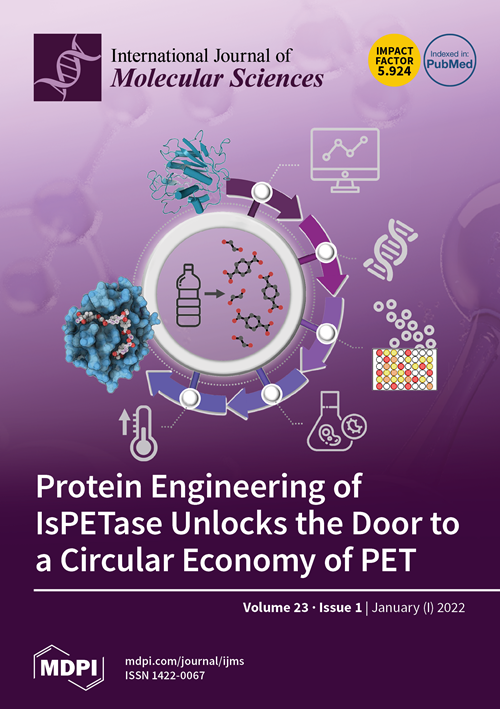ETV6::ABL1-Positive Myeloid Neoplasm: A Case of a Durable Response to Imatinib Mesylate without Additional or Previous Treatment
IF 4.9
2区 生物学
Q1 BIOCHEMISTRY & MOLECULAR BIOLOGY
引用次数: 0
Abstract
ETV6::ABL1 rearranged neoplasms are rare hematological diseases. To date, about 80 cases have been reported, including myeloid and lymphoid leukemias. The ETV6 gene codes for an ETS family transcription factor and several fusion partners have been described. When translocated, ETV6 causes the constitutive activation of the partner genes. Here, we report the case of a 54-year-old woman with a cryptic insertion of the 3′ region of ABL1 in the ETV6 gene. The patient was first diagnosed with idiopathic hypereosinophilic syndrome, according to the clinical history, conventional cytogenetics, standard molecular analyses and pathologist description. Next generation sequencing of diagnosis samples unexpectedly detected both ETV6::ABL1 type A and B fusion transcripts, which were then confirmed by FISH. The diagnosis was Myeloid/Lymphoid neoplasm with ETV6::ABL1 fusion, and the patient received imatinib mesylate treatment. In a follow-up after more than one year, the patient still maintained the molecular and complete hematological responses. This case highlights the importance of timely and proper diagnostics and prompt tyrosine kinase inhibitor treatment.ETV6::ABL1阳性髓样肿瘤:一例对甲磺酸伊马替尼持久应答而无需额外或先前治疗的病例
ETV6::ABL1重排肿瘤是一种罕见的血液病。迄今为止,已报道的病例约有 80 例,包括骨髓性和淋巴性白血病。ETV6 基因编码一种 ETS 家族转录因子,目前已描述了几种融合伙伴。当易位时,ETV6 会导致伙伴基因的组成性激活。在此,我们报告了一例 54 岁女性的病例,她的 ETV6 基因中存在 ABL1 3′ 区域的隐性插入。根据临床病史、常规细胞遗传学、标准分子分析和病理学家的描述,患者最初被诊断为特发性高嗜酸性粒细胞综合征。诊断样本的新一代测序意外检测到了 ETV6::ABL1 A 型和 B 型融合转录本,然后通过 FISH 进行了确认。患者接受了甲磺酸伊马替尼治疗。在一年多的随访中,患者仍然保持着分子和完全血液学反应。本病例强调了及时、正确诊断和及时接受酪氨酸激酶抑制剂治疗的重要性。
本文章由计算机程序翻译,如有差异,请以英文原文为准。
求助全文
约1分钟内获得全文
求助全文
来源期刊

International Journal of Molecular Sciences
Chemistry-Organic Chemistry
CiteScore
8.10
自引率
10.70%
发文量
13472
审稿时长
17.49 days
期刊介绍:
The International Journal of Molecular Sciences (ISSN 1422-0067) provides an advanced forum for chemistry, molecular physics (chemical physics and physical chemistry) and molecular biology. It publishes research articles, reviews, communications and short notes. Our aim is to encourage scientists to publish their theoretical and experimental results in as much detail as possible. Therefore, there is no restriction on the length of the papers or the number of electronics supplementary files. For articles with computational results, the full experimental details must be provided so that the results can be reproduced. Electronic files regarding the full details of the calculation and experimental procedure, if unable to be published in a normal way, can be deposited as supplementary material (including animated pictures, videos, interactive Excel sheets, software executables and others).
 求助内容:
求助内容: 应助结果提醒方式:
应助结果提醒方式:


